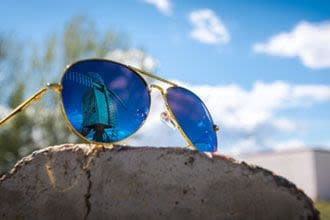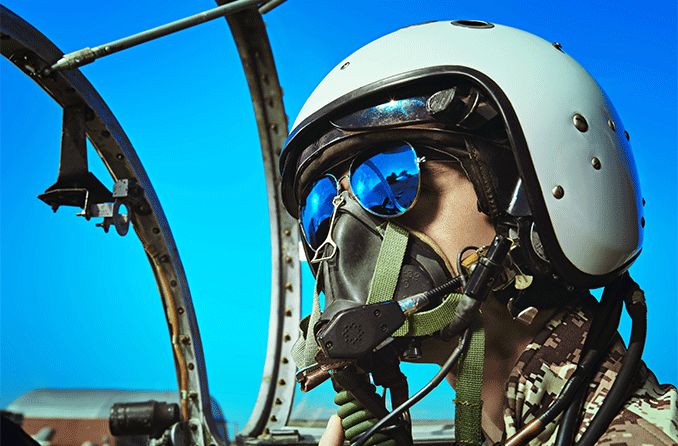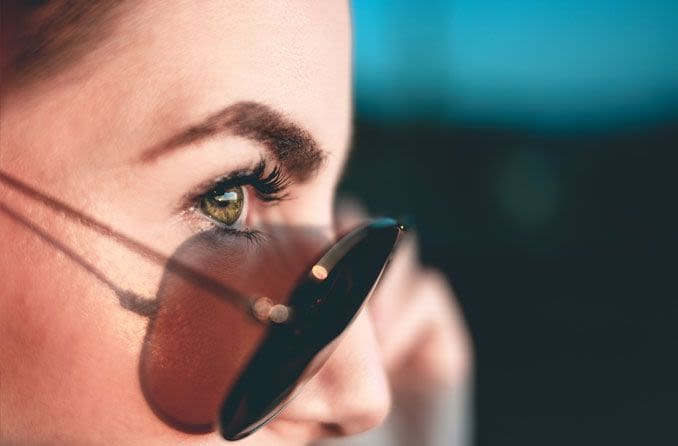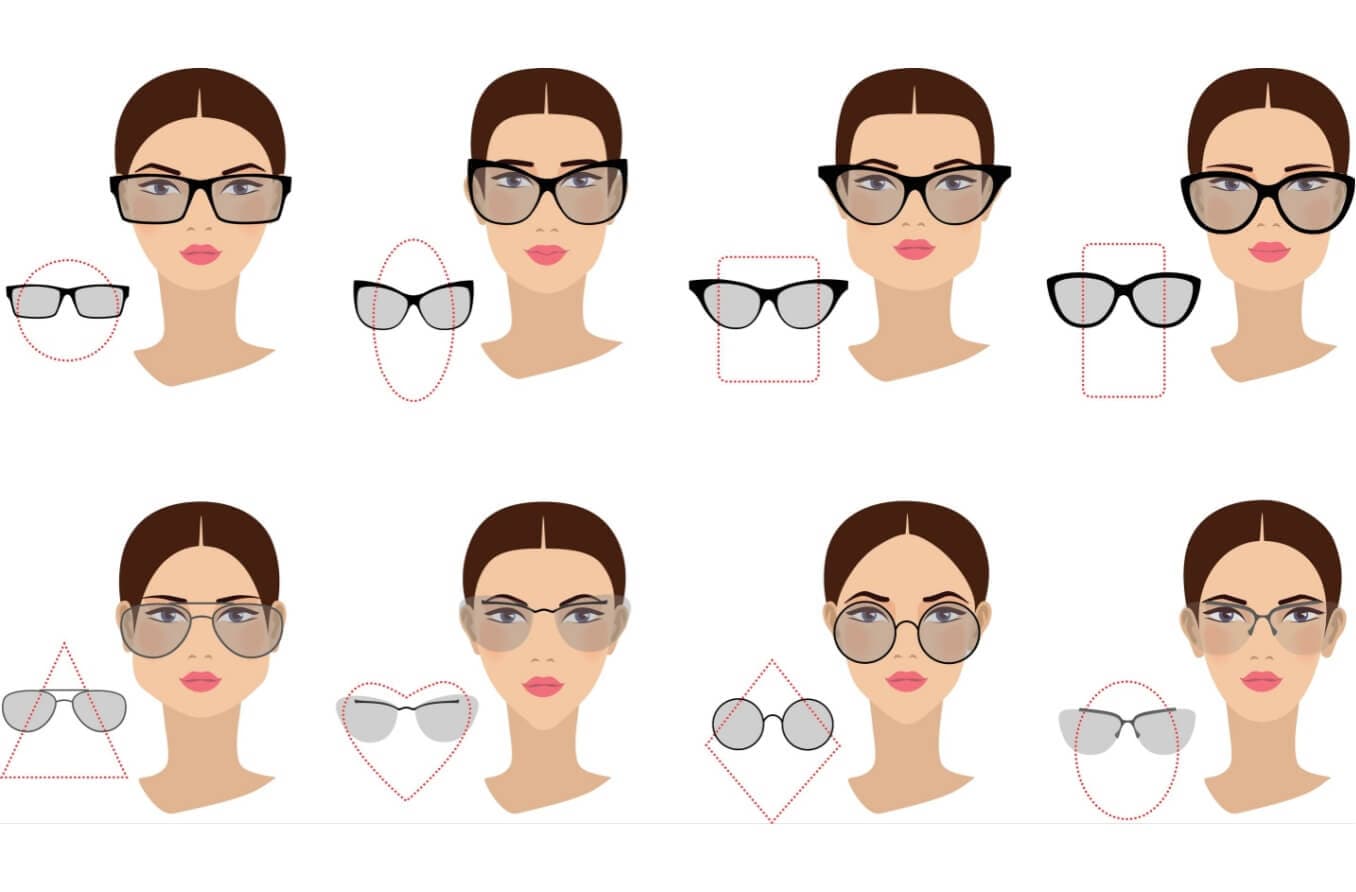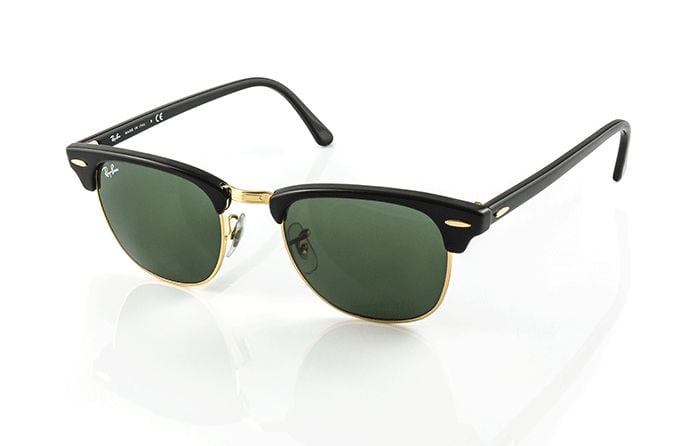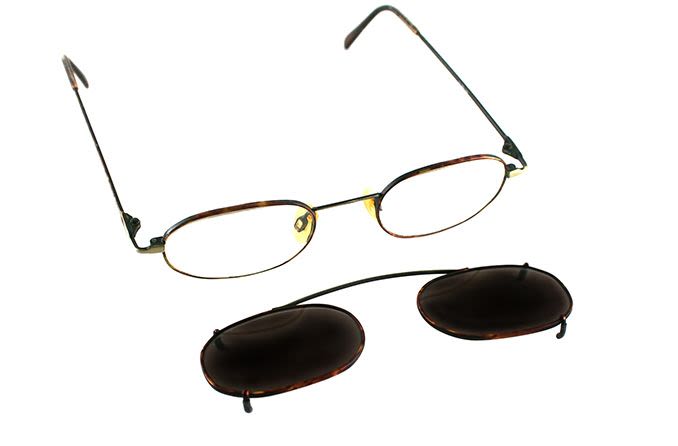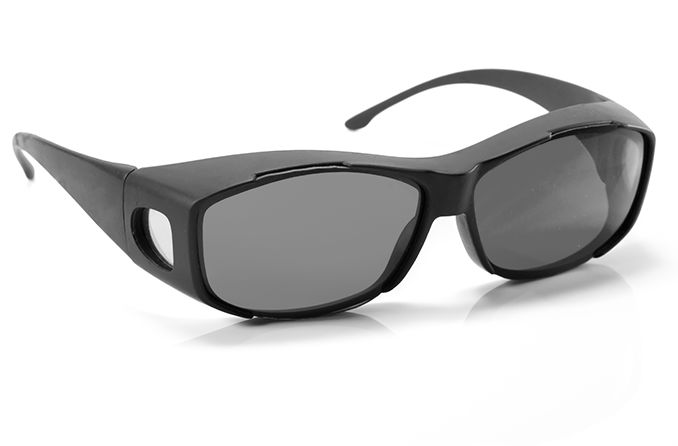The fit of your aviator sunglasses depends on why you’re wearing them.
For vision-critical activities like driving a car, piloting an airplane or climbing a mountain, you need a precise fit in your sunglass lenses, bridge and temple arms. However, precision isn’t so critical for laid-back scenarios like hanging out at a sidewalk café or rooftop bistro.
We’ll start with casual uses of aviator sunglasses before moving on to more practical uses.
Fitting aviator sunglasses for casual use

Let’s say you crave the calm-and-in-command vibe of aviator sunglasses, but you’ll be wearing them mostly in casual settings. Your aviators should fit your face shape — not so large that they draw attention themselves but not so small that they look strange or intimidating.
Moreover, aviator sunglasses should not slide down your nose. Make sure the temple arms don’t scrape or irritate your ears. Your aviator shades should stay in place when you move your head up, down and side to side.
There’s always a temptation to choose too-large (or too-small) sunglasses to look edgy or aloof or something else altogether. It’s totally cool to make a fashion statement with aviators. Just make sure they feel comfortable and protect your eyes from the sun.
Fitting aviators for practical use

Aviator sunglasses exude authority and competence, which makes them a great choice for people who work outdoors in supervisory or law-enforcement jobs.
Indeed, the simple, lightweight and durable design of aviator shades makes them an excellent choice for anybody who works or plays hard under the sun for hours at a time.
In these practical scenarios, fitting your eyewear is just as important as fitting your footwear. You want a comfortable fit on your nose — sunglasses should sit there firmly without slipping.
And don’t neglect the fit around your ears. Some sunglass frames can be bent at the end of the temple arm to fit your ears more snugly. Others have springs in the hinges to help hold them in place.
SEE RELATED: Eyeglass temples: How do you know if they're the right length?
Design details like nose pieces and temple arm shapes can have a huge impact on comfort, especially if you wear your aviators for many hours at a time.
Aviator frame measurements
All eyeglass frame measurements (in millimeters) include the eyepiece, nose bridge and temple arms. For instance, check out the measurements of these four Ray-Ban Aviator models:
All four have the same lens width. Three out of four have the same bridge width. This is fairly typical: Manufacturers often design and build models of similar lens and bridge widths, with the largest variations in the temple arms.
The Outdoorsman’s temple arm proves the point: It’s longer because it’s hooked at one end to fit tight around the ear for crash-prone activities like skiing or motocross racing.
The Shooter has a 9-mm bridge piece, making it 5 mm narrower across the front than the other models. It also has extra-thin temple arms to avoid blocking peripheral vision.
Most eyeglasses have these sizes printed on their temple arms. The smallest two-digit number is the bridge width, the next-largest number is the lens width and the three-digit number is the temple arm length.
Retailers provide even more measurement details, such as the lens depth and the overall eyeglass width. Websites also are adding features that let you overlay the lens and frame with a picture of your face to get an idea of how the aviators will look on your face.
That’s an excellent start, but there’s no substitute for putting your aviator sunglasses on your head to check the fit around your ears and nose.
More aviator fit tips

- If your aviator sunglasses fit properly, most of your eyebrows should be behind the lenses.
- When you blink your eyes, your eyelashes should not brush the lenses.
- The nose pads should not dig in or leave dents after you’ve worn them for an hour or two.
If you mind all these details, you’ll stand a much better chance of getting the closest fit with your aviator shades.
Admittedly, this seems like a lot to figure out for a pair of sunglasses. Just remember that these principles apply to most varieties of eyewear.
Also, don’t forget that you can learn only so much from research on the internet. It's best to work with a professional optician and a reputable eyewear dealer to ensure the optimum balance of fit, style and eye protection with aviator sunglasses.
Ready to shop for Aviator sunglasses?
